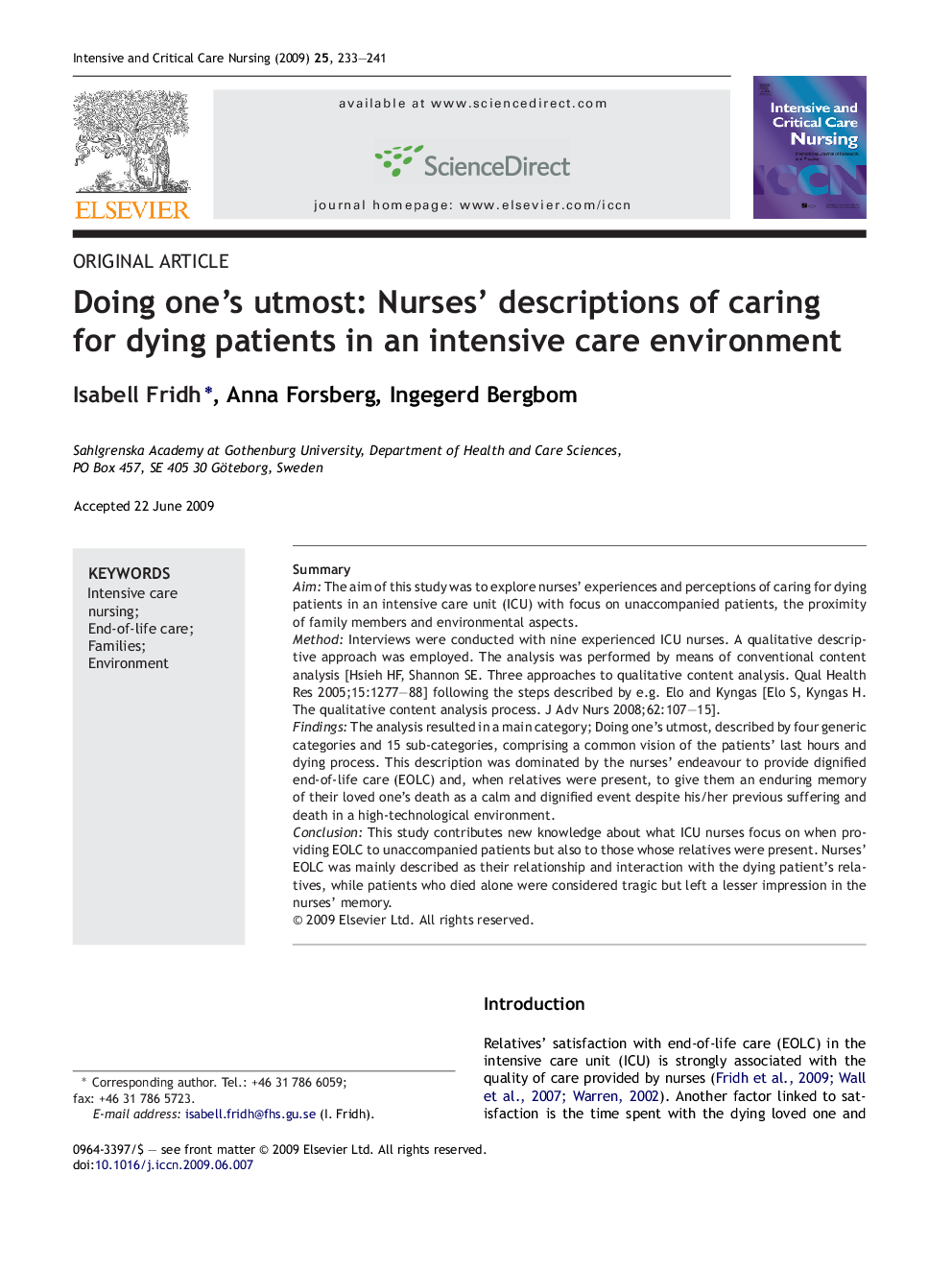| Article ID | Journal | Published Year | Pages | File Type |
|---|---|---|---|---|
| 2653395 | Intensive and Critical Care Nursing | 2009 | 9 Pages |
SummaryAimThe aim of this study was to explore nurses’ experiences and perceptions of caring for dying patients in an intensive care unit (ICU) with focus on unaccompanied patients, the proximity of family members and environmental aspects.MethodInterviews were conducted with nine experienced ICU nurses. A qualitative descriptive approach was employed. The analysis was performed by means of conventional content analysis [Hsieh HF, Shannon SE. Three approaches to qualitative content analysis. Qual Health Res 2005;15:1277–88] following the steps described by e.g. Elo and Kyngas [Elo S, Kyngas H. The qualitative content analysis process. J Adv Nurs 2008;62:107–15].FindingsThe analysis resulted in a main category; Doing one's utmost, described by four generic categories and 15 sub-categories, comprising a common vision of the patients’ last hours and dying process. This description was dominated by the nurses’ endeavour to provide dignified end-of-life care (EOLC) and, when relatives were present, to give them an enduring memory of their loved one's death as a calm and dignified event despite his/her previous suffering and death in a high-technological environment.ConclusionThis study contributes new knowledge about what ICU nurses focus on when providing EOLC to unaccompanied patients but also to those whose relatives were present. Nurses’ EOLC was mainly described as their relationship and interaction with the dying patient's relatives, while patients who died alone were considered tragic but left a lesser impression in the nurses’ memory.
